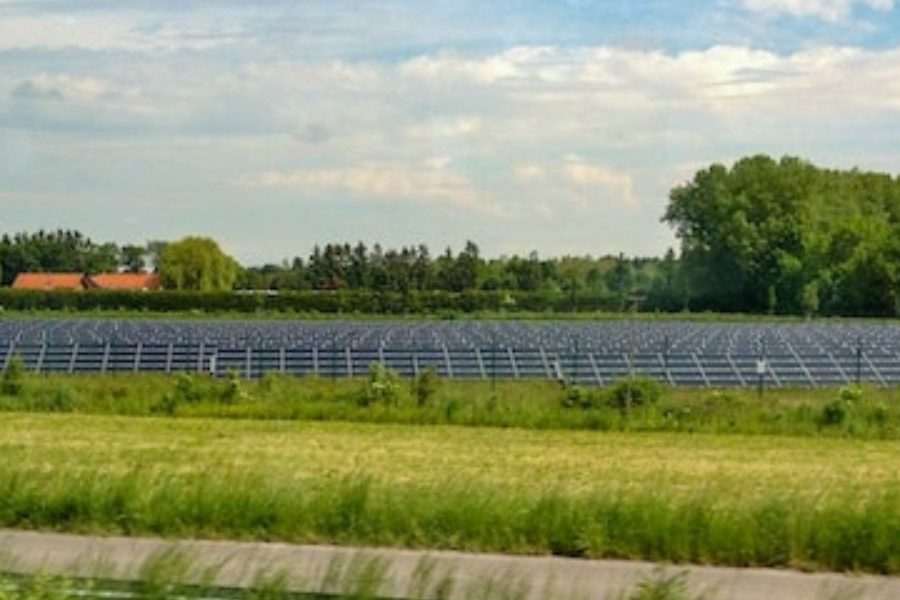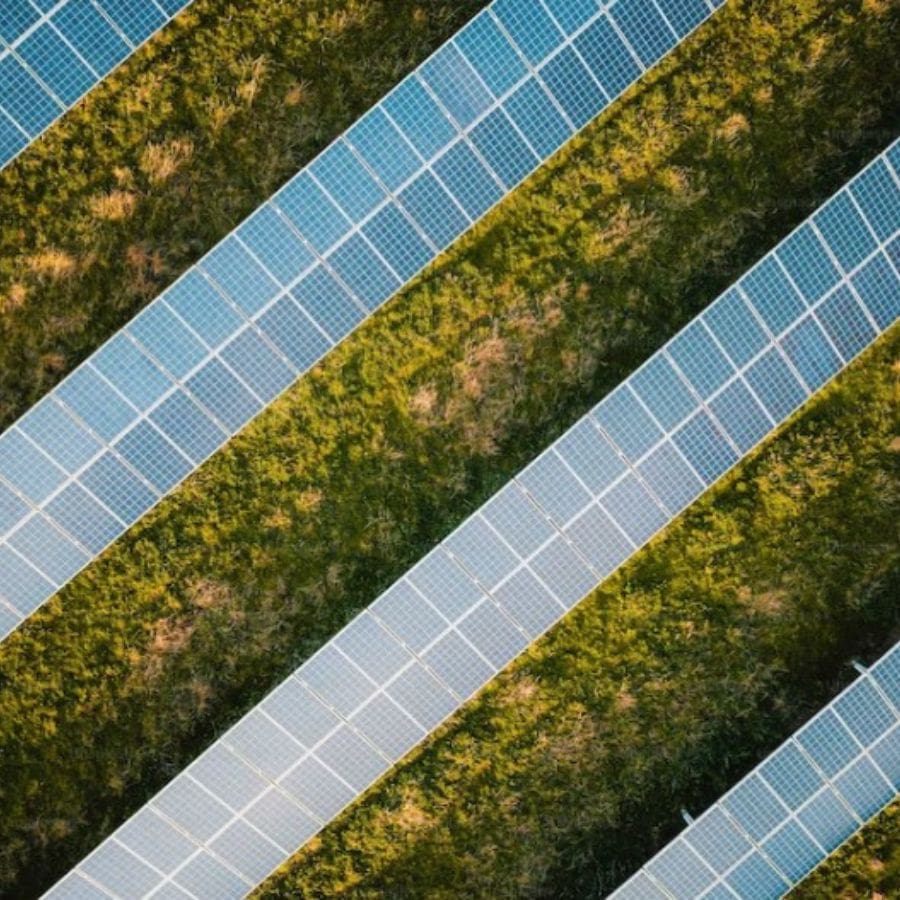
Best Seeds For Agrivoltaics
As the demand for renewable energy rises, countries like Canada are exploring innovative solar practices to meet their energy goals. One such practice gaining popularity is agrivoltaics, which combines traditional solar installations like the ones discussed on Solar BC here with crop production. This comprehensive agrivoltaics research effort aims to maximize land use efficiency and foster sustainable agricultural practices.
Considering the local climate, this article will delve into Canada’s best seeds for agrivoltaics. It will also explore the unique challenges and benefits of growing crops beneath solar panels.
Agrivoltaics and Solar Technology

Agrivoltaics, also known as solar farming or dual-use farming, involves the integration of solar arrays and crop cultivation on the same land. The solar panels generate electricity while the crops grow beneath them, efficiently using available space. This innovative approach offers several advantages:
- increased land productivity
- reduced water evaporation
- improved crop yield
- energy efficiency
According to the National Renewable Energy Laboratory (NREL), agrivoltaic systems have shown promising results in increasing overall energy generation compared to traditional solar development. Solar panels can create a microclimate by providing shade and reducing air temperature. That benefits crop growth, particularly in regions with high solar potential, like Canada.
Choosing the Right Seeds
When selecting seeds for agrivoltaics in Canada, it is crucial to consider the local climate, solar technology, and the intended use of the crops. Since solar panels can cast shade and alter light patterns, certain crops are better suited for growing beneath them. Here are some seeds that have demonstrated compatibility with agrivoltaic systems:
Wheat (Triticum aestivum)
Wheat (Triticum aestivum) is a highly compatible crop for agrivoltaics in Canada, making it an ideal choice for solar farming. As a staple crop, wheat plays a significant role in Canada’s agricultural revenue, as Agriculture and Agri-Food Canada reported. It benefits from the partial shade the solar array provides when grown beneath solar panels in agrivoltaic systems. This shading reduces water evaporation and enhances the efficiency of photosynthesis, resulting in increased yields and improved crop quality.
Furthermore, wheat is well-suited for regions with colder climates, making it suitable for many parts of Canada. It possesses resilience against cold temperatures and can endure occasional frosts. By carefully selecting appropriate wheat varieties tailored for agrivoltaic systems, farmers can strike a harmonious balance between energy production and crop productivity.
In the context of solar projects, including agrivoltaics, the integration of wheat as a primary crop offers multiple advantages. Not only does it contribute to the sustainable use of land and maximize solar panel efficiency, but it also supports the diversification of crops in solar farming. While ornamental crops may have their place in some scenarios, wheat’s economic significance, compatibility with solar panels, and ability to withstand colder climates make it a top choice for agrivoltaics in Canada.
Canola (Brassica napus)
Canola (Brassica napus) exhibits promising potential as a crop for agrivoltaics in Canada, particularly in solar projects to generate electricity. Renowned for its adaptability, Canola can thrive in diverse climatic conditions. The shade provided by PV panels in agrivoltaic systems helps create an ideal microclimate by regulating temperature and minimizing moisture loss, fostering optimal conditions for canola cultivation. Integrating Canola into solar projects maximizes land use efficiency. In addition, it allows farmers to harness the dual benefits of crop production and renewable energy generation.
Canola is a high-yielding crop with multiple applications, including cooking oil, biofuel, and animal feed. By incorporating Canola into agrivoltaic systems, farmers can capitalize on its economic value while simultaneously contributing to the generation of clean electricity through solar projects. This combination of crop cultivation and renewable energy production demonstrates the potential of agrivoltaics. It shows the potential to promote sustainable practices and address future energy demands.
Soybeans (Glycine max)
Soybeans (Glycine max) are a valuable crop with significant potential in agrivoltaics, particularly in solar projects, to generate electricity. Renowned for their high protein content and versatility in various industries, soybeans thrive in the cool-weather regions of Canada, especially the Prairie Provinces. The Crop Development Centre at the University of Saskatchewan highlights that soybeans when cultivated in agrivoltaic systems, benefit from the moderate shading provided by PV panels. This shading helps mitigate the effects of extreme weather conditions and reduces weed competition, resulting in improved soybean yields.
Moreover, soybeans play a crucial role in crop rotation as they can fix atmospheric nitrogen, which enhances soil fertility. By incorporating soybeans into agrivoltaic systems, farmers contribute to sustainable practices. They promote soil health and crop diversity. This integration of soybeans into solar projects aligns with the growing emphasis on renewable energy generation and maximizing land use efficiency.
Agrivoltaics, with soybeans as a key crop, can provide a synergistic approach where crop production complements solar installations. It enhances the sustainability of solar projects and supports most solar installations’ economic and environmental objectives. By leveraging agrivoltaics, solar developers and farmers can collaborate to harness the benefits of renewable energy generation while fostering agricultural productivity and diversification.
Barley (Hordeum vulgare)
Barley is a resilient and adaptable crop that plays a significant role in Canada’s agriculture sector. With agrivoltaics, barley can thrive under the partial shade created by solar panels, reducing the risk of heat stress during summer. The Government of Alberta’s Agriculture and Forestry Department states that barley production contributes to animal feed and the brewing industry. By integrating barley into agrivoltaic systems, farmers can achieve higher yields while harnessing renewable energy.
Barley is well-suited for agrivoltaic systems due to its ability to tolerate shade and adapt to various soil types. It is a hardy crop that can withstand harsh weather conditions, making it a reliable choice for solar farming.
Leafy Greens (Lettuce, Spinach, and Kale)
Leafy greens, including lettuce, spinach, and kale, are ideal for agrivoltaic cultivation due to their shade tolerance and shorter growth cycles. The reduced exposure to direct sunlight helps maintain optimal temperature and moisture levels for these crops, preventing wilting and bolting. The Ontario Ministry of Agriculture, Food and Rural Affairs highlights the potential of growing leafy greens in the shade of solar panels, allowing farmers to extend their growing seasons and meet the increasing demand for fresh, locally grown produce.
Leafy greens are nutrient-dense crops that are in high demand in Canada. By implementing agrivoltaics, farmers can grow these crops sustainably and enhance their quality, flavor, and market value.
Indigenous Crops (Corn, Beans, and Squash)
Indigenous crops, such as the traditional combination of corn, beans, and squash, known as the “Three Sisters,” hold immense cultural and agricultural significance in Canada. With the advent of agrivoltaics, there is an opportunity to integrate these crops into sustainable farming practices while generating electricity. The Government of Canada’s Indigenous Agriculture Initiative actively encourages the cultivation of these traditional crops in agrivoltaic systems to support cultural preservation and empower local communities. These crops thrive in the shade of solar panels, creating an optimal growing environment.
The “Three Sisters” cropping system exemplifies a mutually beneficial practice where corn supports beans to climb while beans fix nitrogen in the soil, benefiting corn and squash. By incorporating these crops into agrivoltaic systems, farmers can simultaneously uphold cultural heritage, enhance biodiversity, and contribute to sustainable food production. This integration aligns with the objectives of generating electricity through solar installations and allows solar developers and Indigenous communities to collaborate in embracing renewable energy while honoring traditional agricultural practices.
Case Study – Jack’s Solar Garden

Image: Jack’s Solar Garden
To illustrate the potential of agrivoltaics in Canada, we can draw inspiration from Jack’s Solar Garden, a pioneering project in Colorado, USA. Developed through a collaboration between a local solar developer and Colorado State University, Jack’s Solar Garden exemplifies how crops can thrive beneath solar panels while generating clean electricity.
This innovative project showcases various crops, including vegetables, herbs, and ornamental plants, flourishing beneath the solar panels. Carefully selected seeds and strategic planting techniques optimize space utilization while maintaining high solar generation efficiency. Jack’s Solar Garden is a remarkable example of how agrivoltaics can harmoniously integrate crop production and renewable energy generation.
Similar projects in Canada, in partnership with local solar companies and educational institutions, can provide valuable models for agrivoltaic initiatives. By adapting and implementing the knowledge gained from projects like Jack’s Solar Garden, Canada can unlock the full potential of agrivoltaics, promoting sustainable agricultural practices and renewable energy generation across the country.
Conclusion
Agrivoltaics is an innovative and sustainable approach that combines renewable energy production with traditional agriculture. Integrating solar panels and crops in Canada holds immense potential because they prioritize farming and clean energy. By selecting suitable seeds, such as wheat, Canola, soybeans, barley, leafy greens, and indigenous crops, farmers can optimize crop yields while benefiting from solar energy generation.
Farmers must consider regional climate, soil conditions, and market demand when choosing the best seeds for agrivoltaics. Consulting with local agricultural extension offices, research institutions, and government resources is crucial to ensure successful implementation. As the agrivoltaics sector grows, ongoing research and collaboration will refine best practices. That makes it a viable and profitable option for sustainable agriculture in Canada.
You may also like
Written by coral
| M | T | W | T | F | S | S |
|---|---|---|---|---|---|---|
| 1 | 2 | 3 | 4 | 5 | 6 | 7 |
| 8 | 9 | 10 | 11 | 12 | 13 | 14 |
| 15 | 16 | 17 | 18 | 19 | 20 | 21 |
| 22 | 23 | 24 | 25 | 26 | 27 | 28 |
| 29 | 30 | 31 | ||||


Leave a Reply